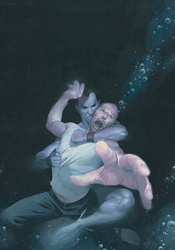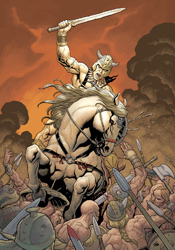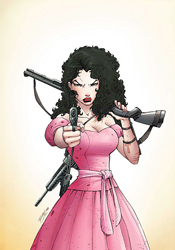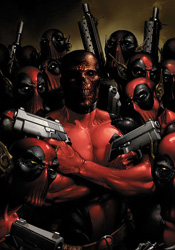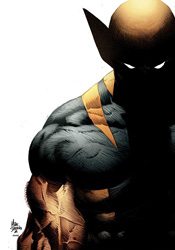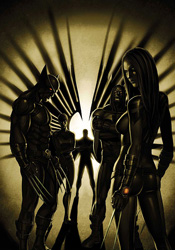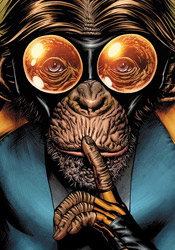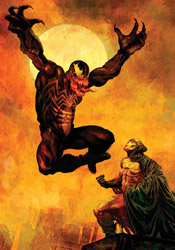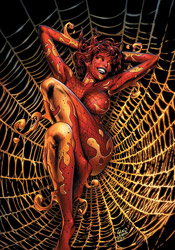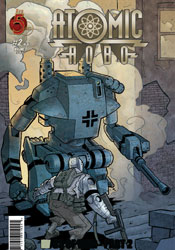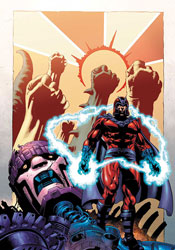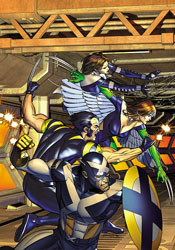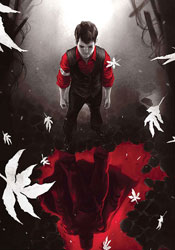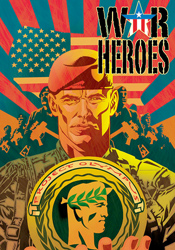
Mark Millar’s writing usually walks a thin line between groundbreaking originality and excessive vulgarity. It’s only natural, I guess, that sometimes pushing the boundaries of good taste sometimes carries a reward and sometimes comes at a cost. This series is, largely, the price without the benefits. It’s Millar both at his creative best and his raunchy worst, amusing himself with crude impropriety and crazy ideas, and hey, if his readers are cool with that, they’re welcome to climb aboard and enjoy the ride. This issue is composed so loosely, it descends into bad language and uncensored activity so quickly, that it really feels like he’s just writing it to entertain himself.
So it shouldn’t be unexpected that I have to warn you: War Heroes #2 surprises its readers with an enormous, floppy cock around the middle of the issue. It’s so completely surprising and totally out of left field, even after all that had come before, that it’s hard to focus on the story afterwards, of which there still isn’t much. One moment we’re watching just another public display of super powers, the next… two panels of John Holmes. So, ah, don’t leave this lying around where your little bro, sis or anyone else you love or respect will find it, and if you’re going to have a problem with a big honkin’ manstick in your reading material, you may want to turn away. Kudos to Tony Harris for the taint’s-eye camera angle he employs in the second panel, though. I don’t think I’ve ever seen that one before.
As an avid reader of Ex Machina, (though recently I’ve given thought to dropping it) I’m fairly familiar with the artwork of Tony Harris. When he’s on, there’s nobody else in the industry quite like him. Harris gives his characters a level of depth, dimension and substance that I really enjoy, a certain roundness that grounds his work in real life. But when he isn’t giving it his all, as was the case in Spider-Man: With Great Power, it really shows. Regrettably, it’s the latter that defines his work in War Heroes. Harris leaves backdrops severely under detailed, struggles with consistent proportions and even seems to reuse a few character designs from some of his other work. While the artist can be counted on for a couple of really impressive visuals in this issue, particularly those involving military vehicles, at large it’s among his weakest efforts.
Were it backed by a solid foundation, I could overlook the excesses Mark Millar seems to enjoy dwelling on between War Heroes’ covers, but it’s not. It’s a potentially great idea that probably didn’t flesh out as well as he’d imagined, padded out to fill a six issue series with so much explicit material Larry Flynt might blush. If it’s going to help tell a story, if it’s necessary, even if it’s a good punchline, I’ve got no problem with a cock or two poking their heads out in the middle of my reading material. When it’s just the latest in a series of segments meant to show you how outrageous the series is and little else, I’d rather look at something else. Skip this if you want substance. On the other hand, if you’re after something with shock value alone, nothing else can even compare.
Overall Score: 2
